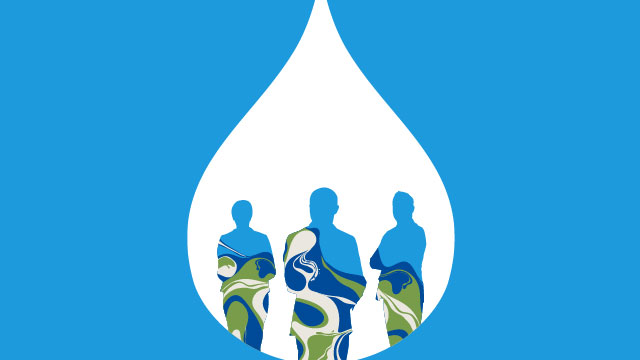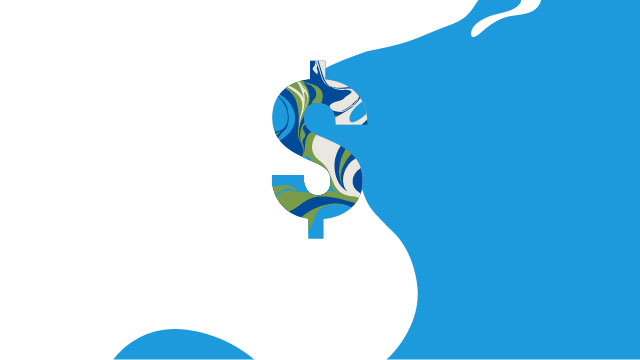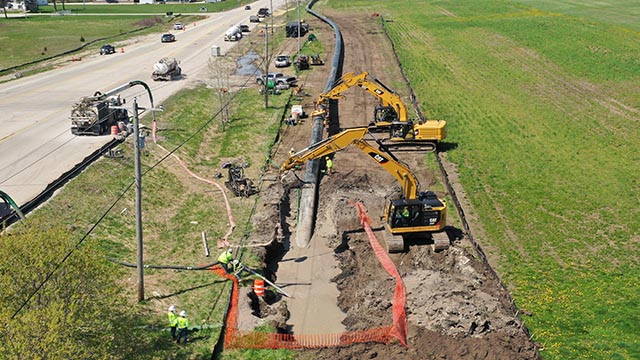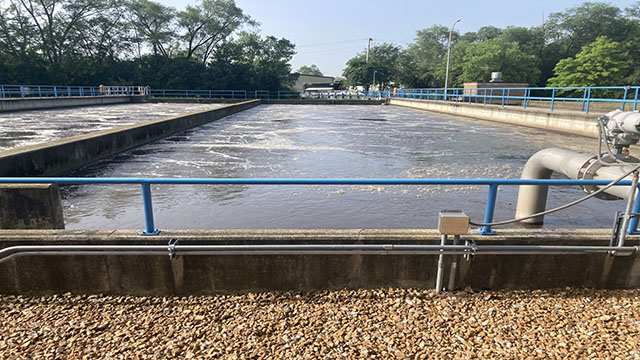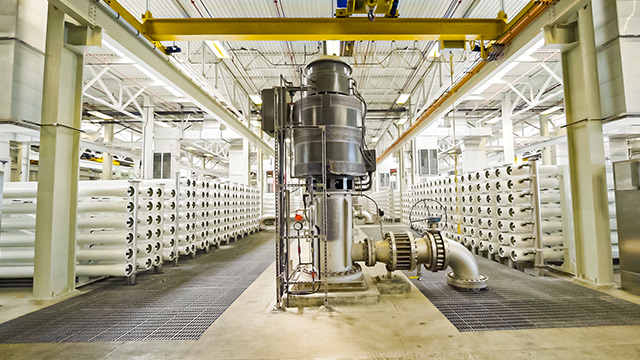Recently, a long-time client and Midwestern city utilities manager posed a fundamental challenge to Black & Veatch’s water leadership team: “Help me understand, explain and implement a Digital Water program.”
At first glance, we believed this would be a simple exercise drawing upon our experience as a comprehensive global water solutions provider. Over the past decade, investments in two-way electronic meters, system monitoring equipment and other technologies have created a wealth of data – the “digital” in digital water. But as we explored this client’s individual needs, and compared them to clients across the United States, U.K. and Asia, we realized that for many water utilities, identifying the components of a Digital Water program is one thing. Implementing a holistic solution, is quite another.
Built in the 1950s and renovated occasionally in the following decades, our client’s 10 million gallon-per-day treatment plant was becoming costlier to operate and maintain. This, at a time when public demand to do more with less is a constant drumbeat and historic funding streams have been limited even as population growth placed additional demand on their system.
To mitigate these competing forces, many of our clients have looked to technology to provide greater efficiency and network intelligence. Distributed metering and sensoring technology deployed across service territories are pushing the IoT deeper into client organizations and creating vast amounts of data. Yet too frequently the presence of multiple data management systems creates silos that prevent operators from drawing actionable insights from the constant stream of information.
What this means is that data capture, while a critical process, must have corresponding software applications that can harness information to improve operations. Analysis that drives decision-making, recognizes and adapts to changing conditions and critically, helps match demand with the supply resources at hand is the heart of a digital water program.
To move from data harvesting towards data science, our client began a three-month pilot of ASSET360®, and soon the platform began providing actionable intelligence to plant operators. Through comparisons of condition data and flow rates, the cost of operating conventional versus high-rate treatment during wet weather events could now be quantified, as well as the energy savings associated with tighter dissolved oxygen control. Real-time process calculations saved plant operators valuable time from manipulating spreadsheets, and remote monitoring by Black & Veatch process engineers provided them with added confidence and support for their decisionmaking process. The pilot was later expanded to include the city’s two wastewater treatment plants and two water treatment plants.
From treatment plant operations to customer consumption at the tap, this is just one example of how global water leaders are learning that digital water is smarter water. Just as the ubiquity of smart phones and intelligent devices has redefined our understanding of connectivity, the power of data to increase system effectiveness is changing our understanding of water infrastructure. The same technology that speeds voice and video services to our smartphones, tablets and laptops is altering how we manage operational maintenance, think about system safety and security and how we plan for future resilience.
Big Data Can Form Sustainable Systems
Our 2018 Strategic Directions: Water Industry Report shows room for growth among water utilities that are collecting robust amounts of data from their systems. For instance, the report finds that only 14 percent of respondents are using their SCADA device data to predict asset failure, as well as to monitor system health and other operational purposes. Just over one-third of respondents reported using SCADA for operational purposes only, and less than half stated said they are using SCADA to monitor both system health and operational purposes.
The true value of a digital water program emerges when operators can move from archiving and analysis of historical data to forward-looking predictive and prescriptive analytics. Here for example, the algorithms can comb through data sets to identify previously undetectable changes in vibrations on a pump or changes in water pressure within a system and schedule preemptive maintenance to maximize uptime. This can help organizations anticipate leaks or asset failures and inform the roadmap of capital investments.
Accordingly, significant numbers of utilities are moving toward the adoption of data-driven strategies, but much room remains. In resource-conscious regions, there is growing urgency around the use of data to help sustain and secure supply. Black & Veatch recently joined Thames Water’s eight2O alliance to deliver innovative, sustainable solutions to water customers in the UK with data analytics services enhancing and enabling the alliance’s effort. Apart from the eight2O alliance and using a combination of data, subject matter expertise and analytics tools, Black & Veatch provided a proactive solution to help Thames Water avoid sewage spills.
In the Thames Water control center, multiple disparate data sets were accessed via SCADA control through alarms, asset performance and weather data. Using algorithms to analyze conditions in network and pumping systems, Thames Water could predict with high probability up to seven days in advance that a pollution event was possible, then take steps to prevent system spillage. Thames Water hasn’t had a discharge of untreated water since the new method of analysis was implemented.
In Hong Kong’s Happy Valley, frequent flooding of the city’s cultural, economic and entertainment center required government officials to explore a solution that combined both heavy hardware and large doses of data. Working with the Drainage Services Department (DSD) of the Government of the Hong Kong Special Administrative Region, an underground storage strategy was developed that leveraged a large tank to store stormwater runoff during severe rainfall events.
At the center of the SCADA system is a network of sensors to capture tidal levels in Victoria Harbor and water levels at several strategic locations, including the storage tank and upstream and downstream of the culvert. With the adjustable dams and SCADA system, the tank remains dry most of the time as stormwater flows along the culvert adjacent to the storage tank straight to the downstream drainage network. During heavy rain, the water level rises and SCADA triggers the adjustable dam system in which excess runoff enters the storage tank. After a rainfall event when the water level in the culvert drops, the movable dams can be further lowered to drain the stored stormwater to the downstream drainage network by gravity.
Secure Networks
As the Internet of Things expands through a range of connected devices and artificial intelligence (AI) propels further system automation, the complexity of interactions on utility networks increases. Higher risk follows. Recent cybersecurity cases underscore the threats.
Earlier this year, it was reported that the water treatment plant system of a European utility was compromised by malware aimed at mining cryptocurrency. Ransomware incidents, as well as larger hacking disruptions like the one at the city of Atlanta, reveal the conundrum for organizations considering the transition to more robust use of data: How can we make our systems smarter but also safer?
Webs of connected devices have opened new entry points for hackers to disable critical infrastructure or release personal information. Interestingly, physical and cybersecurity threats rank comparatively low among survey respondents’ challenges and even dropped in importance from 2017. How utilities manage and safeguard both customer data and behind-the-fence data transport will be crucial.
Data for the Road Ahead
The amount of data moving across networks is staggering and defies an accurate count; it’s always growing. And the demand curve for data-hungry applications will continue to rise so long as things like regulatory compliance, the planning of future investments and predicting asset failure rely on it.
Moving to digital water will test the comfort levels of many leaders within our industry, who’ve long resisted technologies that are disrupting the power and telecommunications sectors. Their concerns are real: Will too much reliance on automation and data override human intuition and control? Can we adequately protect our systems against hacks and privacy intrusions? And even if the benefits of data are clear, how do we convince skeptical stakeholders that the payoffs are worth the investment? After all, projects — now more than ever — must be hard-wired to performance and the bottom line.
Data performs because it informs. It gives us keen insights about asset health. It reports and predicts customer consumption and equipment failure. It forecasts how flood control systems will fare under load and much, much more. Putting this information to work requires two crucial components: the decision to embrace data, and to find experienced partners who can help water and treatment providers manage and act on that data.
We marvel at the way smartphones and data-rich applications have reshaped how we chat with loved ones, listen to music or even turn on the lights. Let’s fully turn that technology toward the critical job of safeguarding our world’s most precious resource.


